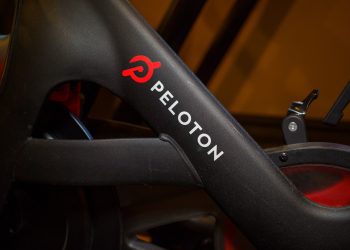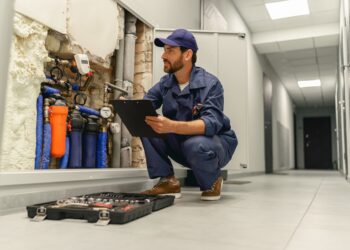COVID-19 has swept through workplaces like a hurricane, scattering employees in every direction, exposing many to new risks, and redefining what workers need to do their jobs safely, efficiently, and effectively. At the same time, customers’ needs and expectations have changed drastically, too. As interactions have moved online and economic pressure has made revenue a matter of brand survival, the touch points where the customer journey and employee journey intersect — moments when a brand can create (or lose) value — have become even more critical than they already were, both in ways that can easily be counted, such as revenue, and in ways that cannot, such as emotional connections.
As your focus as a business leader shifts from survival and resilience to recovery and the long-term health of your company, redesigning your employee experience (EX) will be paramount. The business imperative is clear: According to a June 15 global PwC survey, almost two-thirds (63 percent) of CFOs are looking to generate revenue by changing or refreshing their product and services mix. But innovation doesn’t come out of thin air: You have to create the internal conditions for it to occur — and that means redesigning the employee experience to nurture creative thinking and experimentation and make room for failure along the way. A good employee experience leads to a good customer experience, which then feeds back to your employees a sense of purpose and satisfaction, creating a virtuous circle. The global crisis has accelerated these workplace transformations, which were already afoot.
Focusing on three key actions for building the EX of the future — one that’s digitally enabled and deeply collaborative — and using design thinking to unleash creativity and innovation, will help set you up for future success.
- Go deep on employee safety and well-being
No business strategy can be effective if it doesn’t embed employee health, safety, and well-being into its DNA. You’ve made a foundational promise to your workers to take care of them, and now it’s time to explore what that really means.
For customer-facing, factory, or field workers, you’ll probably have to make structural changes: rethinking processes, physical setups, and safety measures. For remote workers, it will require you to radically reimagine the virtual workplace in two ways. First, you’ll have to address the conditions your people need to work harmoniously from their home base indefinitely. Second, you’ll have to give them all the tools and support they need to transition real-time collaboration to the cloud and the screen, long-term. Many organizations are already well on their way, with redesigned workspaces (including factories and retail outlets) and processes that embed the requisite distancing at work sites. And some are offering remote workers tools and benefits — including office furniture, fast Wi-Fi, and help with childcare — that address their needs.
Overall, according to PwC’s CFO Pulse survey, more than seven in 10 business leaders are strongly confident in their ability to provide a safe working environment for their people. Design thinking — a holistic process based on open listening, dialogue, co-creating and testing — is fundamental to this effort, as it forces you to pursue change with your employees, not for them. You go into the field to observe the expectations, needs, and pain points of employees, using ethnographic tools such as active listening interviews, and then ask them to define with you the ways that you can improve their current situation.
Employers should also recognize that the stresses inherent in this difficult time — worrying about the health and well-being of loved ones, juggling domestic and work responsibilities under one roof, finding food and supplies — are amplified by job insecurities. This is the time to go the extra mile for your people in showing care, understanding, and support. This can include offering support to those whom you must lay off, by helping them find new work opportunities. Not only is this humane, it keeps a door open for when conditions improve.
- Deepen your connection with those who work for you
The pandemic is temporary, but the changes we are seeing now are not likely to be: In PwC’s CFO survey, more than five in 10 respondents (52 percent) said they plan to make remote work a permanent option where possible. Sudden status as remote workers may lead employees to question the whole notion of belonging to an organization. So, it’s important to double down on a strong and positive culture, one that demonstrates connection to and care for employees in every possible way. Tap those within your organization who wield influence — your authentic informal leaders — who can model and teach key cultural behaviors, those who are good at connecting people, and those who are able to build organizational pride by linking cultural values and behaviors to day-to-day activities.
And be transparent with your employees to build and reinforce a more trusting relationship and a deeper bond. For instance, it could be that large-scale, face-to-face meetings of the pre-COVID-19 era will be relegated to the history books to be replaced by smaller, fleeter teams working the front lines. If so, decisions might be made and important discussions might happen among the on-the-ground cadre, leaving remote employees feeling disconnected. Here, too, design thinking — especially the components of listening and dialogue — can help. Communicate with your entire team about how decisions are being made and who’s making them, and encourage feedback from all parts of the organization so you have access to a wider group of ideas.
As the digitization of the workplace continues to accelerate, lines between employees and “gig workers” might blur further, especially given the churn in the workforce due to layoffs and furloughs. Contractors serve a vital role in times of economic uncertainty, and making sure they feel connected to your business will benefit both you and them.
Design thinking can help you deepen your bond with your people by enabling you to identify and focus on the moments that matter most to them. With this understanding, you can create projects, achieve quick wins, or take symbolic actions that communicate your values and your care and commitment to your people and to the issues that are important to them. Consider, for example, how many companies have responded to the Black Lives Matter movement by having conversations about racial equality and committing to specific actions to address the problem.
- Reconsider how you’re defining success
If the pandemic has forced us to reevaluate how we work, it must also make us reevaluate how we measure employee performance and success. Almost every organization is taking hits to income and adjusting expectations downward. Similarly, you can’t expect both more productivity and more well-being from a workforce that’s still coping with the disruptions of remote working and worrying about what the future may hold for their own careers, their families, and their loved ones.
Something has to give — and that something is the two-dimensional way companies have traditionally measured cost and profitability. For instance, if companies break down the workforce into cohorts and understand what moments matter to them and what drives their experiences, they can tailor investments to targeted areas of transformation (e.g., operating model, culture, technology), drive specific outcomes, and get a more holistic view of how employee experience influences customer experience. This then helps establish a framework to measure the return on investments in improving those experiences (which we call “return on experience,” or ROX).
Apply design thinking principles to this new measurement effort by soliciting frequent feedback from employees and customers to gauge how well they’re functioning under the pandemic-induced strain and what impact employees are having on customers. By listening and observing, you’ll be able to identify positive behaviors that you want to spread throughout your organization and negative ones to eliminate. Then, you can come up with key performance indicators to track the adoption of those behaviors. For instance, you might want to reduce turnover or increase employee attendance at virtual events, and you might find that certain behaviors help advance those goals. You can measure their take-up through classic means, such as people surveys, or more individualized metrics.
If you can do these three things — going deep on employee safety and well-being, deepening your connection with those who work for you, and reconsidering how you’re defining success — you’ll strengthen the infinite loop of experiences that flow from employees to customers and back again, and you’ll be in a better position for the “new normal” that will emerge from the COVID-19 pandemic.
By Bhushan Sethi and Jean-Francois Marti
About the authors: Bhushan Sethi is the joint global leader of PwC’s people and organization practice. Based in New York, he is a principal with PwC US; Jean-François Marti was a co-founder and the CEO of Nealite, the French design thinking agency acquired by PwC France in 2015 and transformed into the PwC Experience Center space in Paris. Based in Paris, he is a partner with PwC France.












